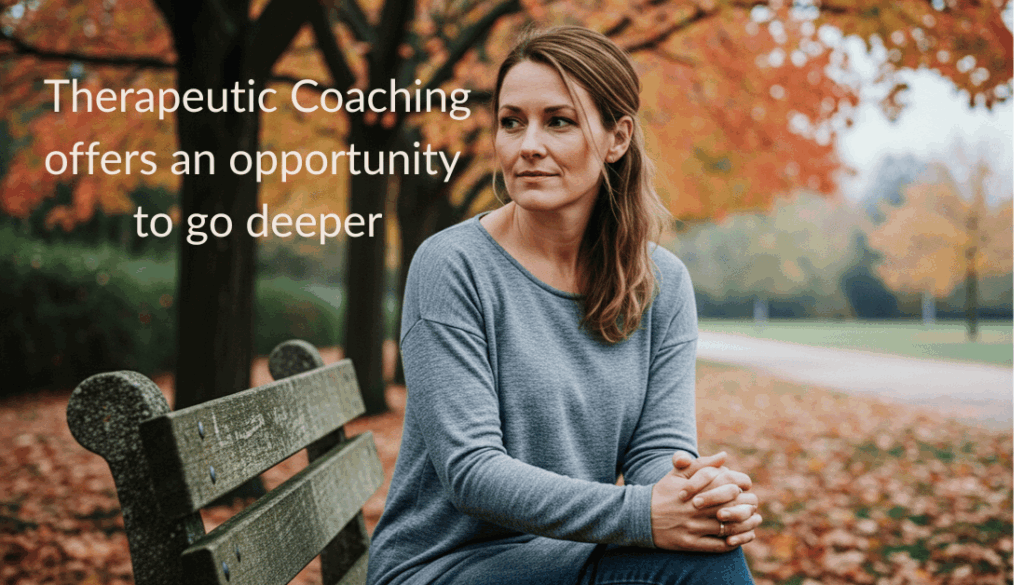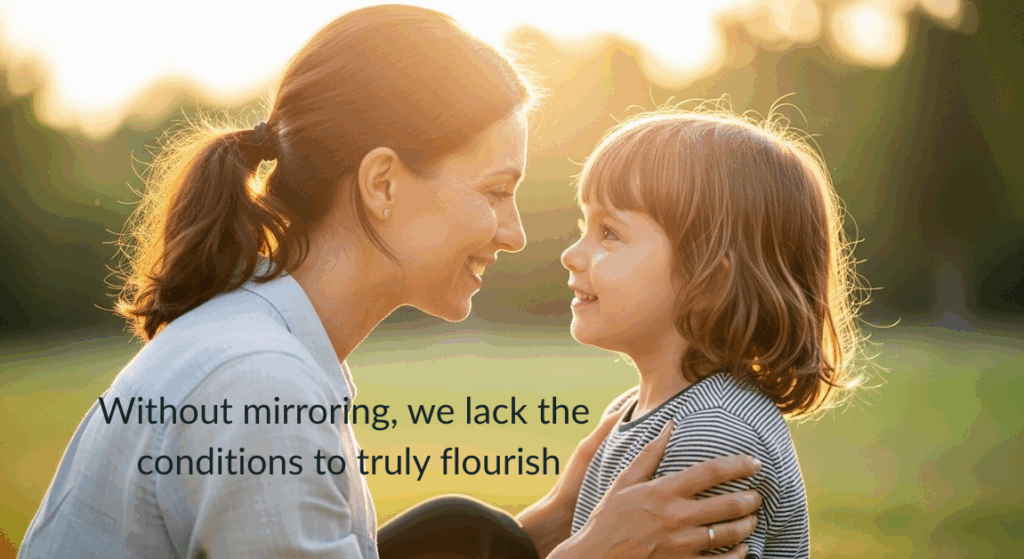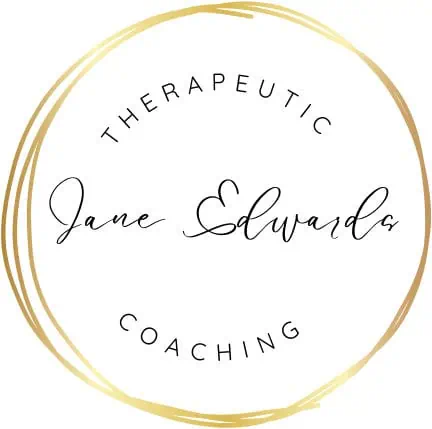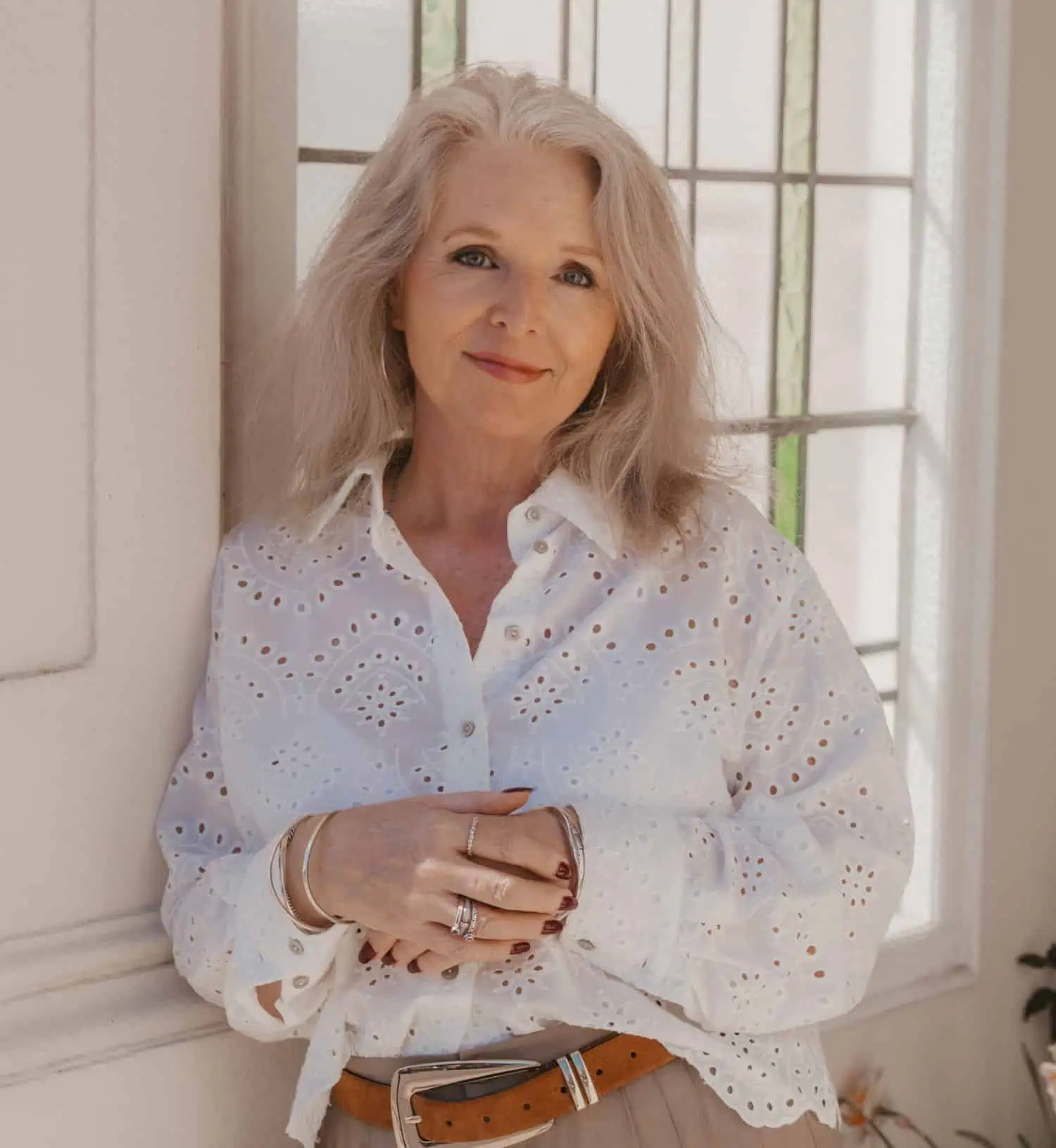When people ask what I do, I tell them, “I’m a Therapeutic Coach.”
There’s often a slight pause as they process what that might mean — and then come the questions:
So, here’s something of an explanation about what Therapeutic Coaching is and why it’s such a powerful approach when it comes to my work with identity.
Therapeutic Coaching is a relatively new, yet significant, development in the world of both therapy and coaching.
It’s a hybrid model that helps clients move forward by combining reflective exploration of the past with forward focused goal setting and actions that shape their future.
By blending psychological insight with practical coaching tools, it becomes a powerhouse for sustainable growth and change.
Therapeutic Coaching explores the root causes of our patterns – the thoughts, emotions and behaviours that influence and guide us both positively and negatively. Sessions are person-centred and uniquely tailored to your needs and preferences. In other words, I see you — the whole person, not just the symptoms or stories you present.
A person-centred approach is powerful because it is supportive and works with you where you are whilst being gently challenging.
Good coaching will always champion you, but Therapeutic Coaching offers an opportunity to go deeper to question your experiences and beliefs, and in doing so, invite awareness, understanding and transformation. This balance between compassion and challenge is a central theme in my work.

My Approach — Self-Awareness and Action
My approach draws on several psychological and coaching models. I work as a pluralistic therapist, meaning I use a range of psychological frameworks to meet you where you are. These include psychodynamic approaches (exploring early and childhood experiences), Cognitive Behavioural Therapy (CBT) — a modality that helps you change unhelpful thoughts and behaviours — Humanistic therapy, which focuses on the concept of self and personal growth, and somatic therapy, a body-centred approach that connects physical awareness with emotional healing.
By drawing from this wide range of models, we create space for choices and preferences which will in turn provide deep reflection and genuine transformation.
This allows clients the freedom to explore their inner world in a way that is safe for them while also being fully supported and guided throughout. This is an ideal model for anyone who has lost touch with their core values and beliefs — or perhaps feel they have never yet had an opportunity to explore and fulfil their potential, either way this work is a wonderful platform for supporting people to become a more authentic version of themselves.
Identity is at the Heart of Who We Are
With a lack of identity we experience the pain of being lost. and it’s easy to underestimate the influence of this. Identity shapes our sense of self and our ability to champion and believe in ourselves, to set boundaries, to be grounded, to create meaningful goals, and to build resilience, to name just a few vital elements that we can lack without it.
Identity is the internal compass we use to navigate our lives. And because this is your life, you are the only person truly qualified to design it. Anything else is a version of yourself built for or around others.
So, why is it so hard to be 100% ourselves — and what happens when we’re not?
The High Cost of Living a Misaligned Life
A misaligned life happens when we’re unable — or not yet ready — to live as our true selves. For some, it’s about reconnection; for others, it’s discovering their true identity for the very first time. The reasons behind this disconnection are many, and they’re rarely our fault.
As children, we rely on mirroring — the way a caregiver reflects our emotions back to us, helping us feel seen, heard, and validated. This is essential to developing a healthy sense of self. Many of us didn’t experience enough of it.
Without adequate mirroring, we don’t have the environment we need to flourish

That makes it difficult to reach our full potential and It’s not a simple fix — you can’t think your way into wholeness or demand to be seen and suddenly feel validated because it’s an internal and complex psychological process.
The absence of mirroring creates complex layers of confusion, and those layers must be understood, deconstructed and rebuilt with awareness. This is what happens in my sessions.
This work matters deeply. How would be if we never get to see how extraordinary life could be when we live in alignment with who we really are.
But whatever has caused that misalignment, change is possible.
The greatest tools you’ll need are desire and tenacity.
For many of us, our younger selves weren’t gifted the safety or support we needed to develop a strong identity. Generational trauma, cultural expectations, or early family dynamics may have made it difficult to become our authentic selves — and sometimes, we simply didn’t realise it could be any different.
Many of these reactions arise from our nervous system’s fight-or-flight response. When you live authentically, those responses soften. They lose their purpose because you are no longer living in conflict with who you are.
Becoming yourself isn’t a five-minute task. It takes commitment — but anyone who chooses to begin can do it. The only real requirement is willingness to be authentic.
Ready to Begin?
If you’re reading this and feel a little lost and maybe have a desire to be seen and heard authentically, and you’re ready to explore what an authentic life might look like I’d love to support you. Book a Discovery Call and we can chat about it or download your free Clarity Workbook where you can begin exploring for yourself. You can also subscribe to my newsletter for guidance, tools, and inspiration on your journey. (link to subscribe to newsletter)
Jane Edwards is a Therapeutic Coach helping women see themselves, feel whole, and feel healed. She combines over 20 years of experience in coaching and leadership development with training in psychotherapeutic counselling. Her work bridges emotional insight with practical growth, helping women lead lives of clarity, purpose, and self‑trust.

